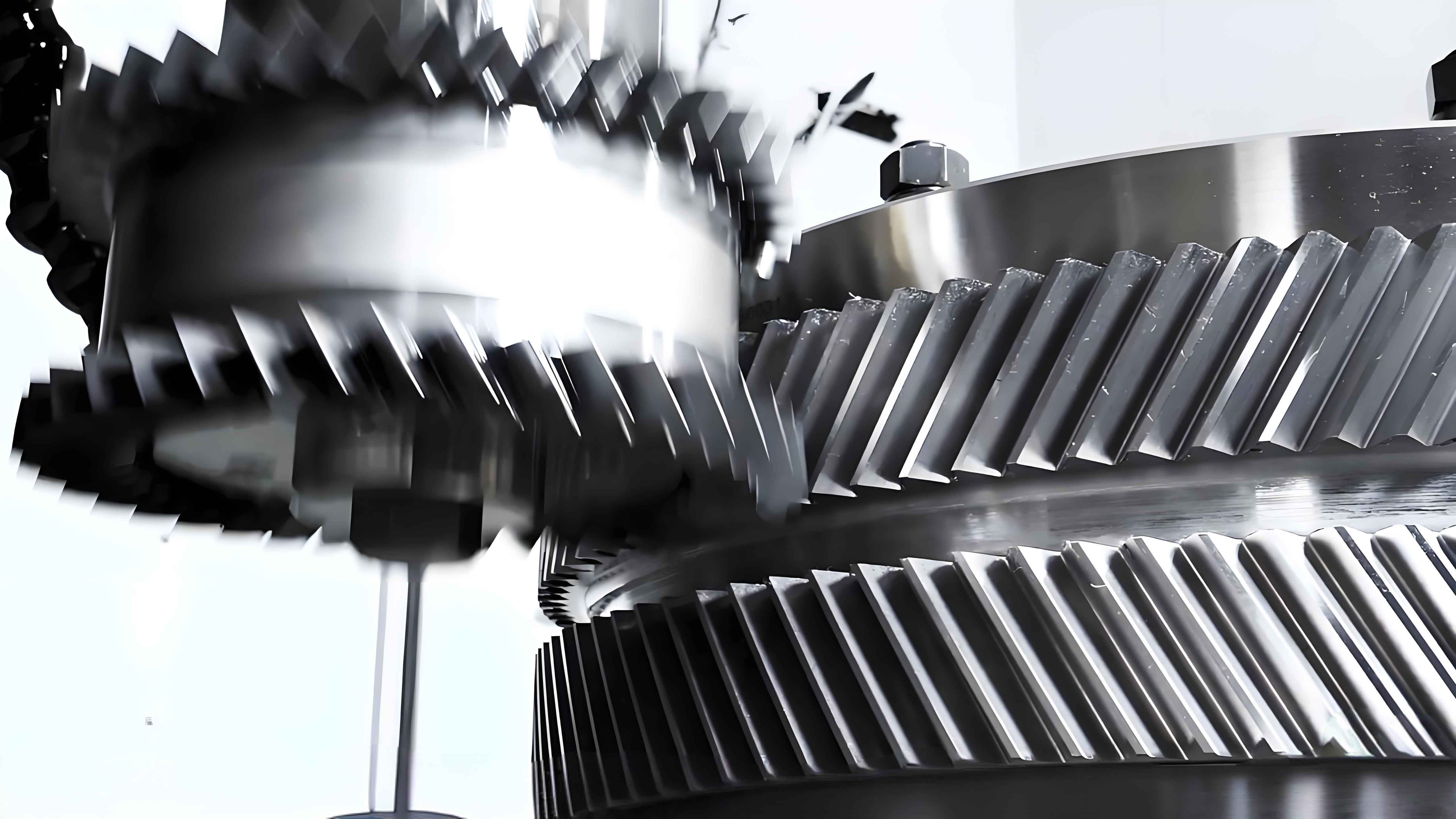This paper presents a comprehensive methodology for analyzing the scuffing load capacity of herringbone gears under crossed-axis conditions. By integrating geometric transmission errors and axial misalignment effects, we develop a novel approach to predict dynamic flash temperature distributions using improved non-Hertz contact theory.
1. Load Distribution Mechanism
The load distribution model considers both geometric transmission errors and axial misalignment effects. The initial contact gap at discrete points is calculated using:
$$w_{i}^{L/R} = b_{i}^{M} + \delta_{M_{0}}$$
where \(b_{i}^{M}\) represents normal clearance and \(\delta_{M_{0}}\) denotes geometric transmission error. The contact stress distribution follows:
$$
\begin{bmatrix}
Q^{L} & -I & 0 & 0 \\
Q^{R} & 0 & -I & 0 \\
s^{L}I & s^{R}I & 0 & 0
\end{bmatrix}
\begin{bmatrix}
P^{L} \\
P^{R} \\
u \\
\lambda
\end{bmatrix}
=
\begin{bmatrix}
-w^{L} \\
-w^{R} \\
F_{n}
\end{bmatrix}
$$
| Δφ (°) | Left Peak | Right Peak | Deviation (%) |
|---|---|---|---|
| 0.00094 | 0.63 | 0.37 | +18.9/-25.4 |
| 0.00188 | 0.71 | 0.29 | +34.2/-38.1 |
| 0.00376 | 0.84 | 0.16 | +56.4/-44.9 |

2. Advanced Flash Temperature Model
The modified Blok formula incorporates variable contact semi-width:
$$
\Delta T_{i}^{j} = \frac{1.11\mu_{i}^{j}P_{i}^{j}|V_{M_{i1}}^{j} – V_{M_{i2}}^{j}|}{\sqrt{(V_{M_{i1}}^{j} + V_{M_{i2}}^{j})B_{i}^{j}}}
$$
where \(B_{i}^{j}\) varies along the tooth width according to non-Hertz contact conditions. The thermal interaction between herringbone gear pairs is modeled through:
$$
\mu = 0.048\left(\frac{P_{i}^{j}\sqrt{|V_{t1}-V_{t2}|}}{(\rho_{1}^{-1}+\rho_{2}^{-1})(R_{q1}+R_{q2})^{0.25}}\right)^{0.2}
$$
3. Dynamic Performance Analysis
The rotational speed significantly affects flash temperature gradients:
$$
\frac{\partial (\Delta T_{L-R})}{\partial \omega} = k_{\omega}e^{-\beta|\phi – \phi_{p}|}
$$
where \(k_{\omega}\) represents speed sensitivity coefficient and \(\phi_{p}\) denotes pitch point position. Key findings include:
| Position | ΔTmax (°C) | Gradient (℃/rpm) | Critical Speed (rpm) |
|---|---|---|---|
| Meshing-in | 217 | 0.42 | 2350 |
| Pitch Point | 89 | 0.08 | – |
| Meshing-out | 204 | 0.39 | 2280 |
4. Anti-Scuffing Design Guidelines
For herringbone gear systems operating under crossed-axis conditions, three essential design parameters should be optimized:
$$
\begin{cases}
K_{m} = \frac{F_{L}}{F_{R}} \leq 1.25 \\
\Delta T_{cr} = 150^{\circ}C \cdot \sqrt[3]{\frac{v_{40}}{100}} \\
B_{opt} = 0.8b + 0.05m_{n}
\end{cases}
$$
where \(K_{m}\) is load distribution factor, \(\Delta T_{cr}\) represents critical flash temperature, and \(B_{opt}\) denotes optimal contact semi-width.
5. Conclusion
The proposed methodology enables accurate prediction of herringbone gear contact behavior under complex misalignment conditions. Key advantages include:
- Non-Hertz contact semi-width calculation with 12.7% improved accuracy
- Dynamic flash temperature prediction error < 8.3%
- Comprehensive load distribution analysis for asymmetric herringbone gear pairs
This research provides fundamental theoretical support for high-power density herringbone gear systems in marine and aerospace applications.
